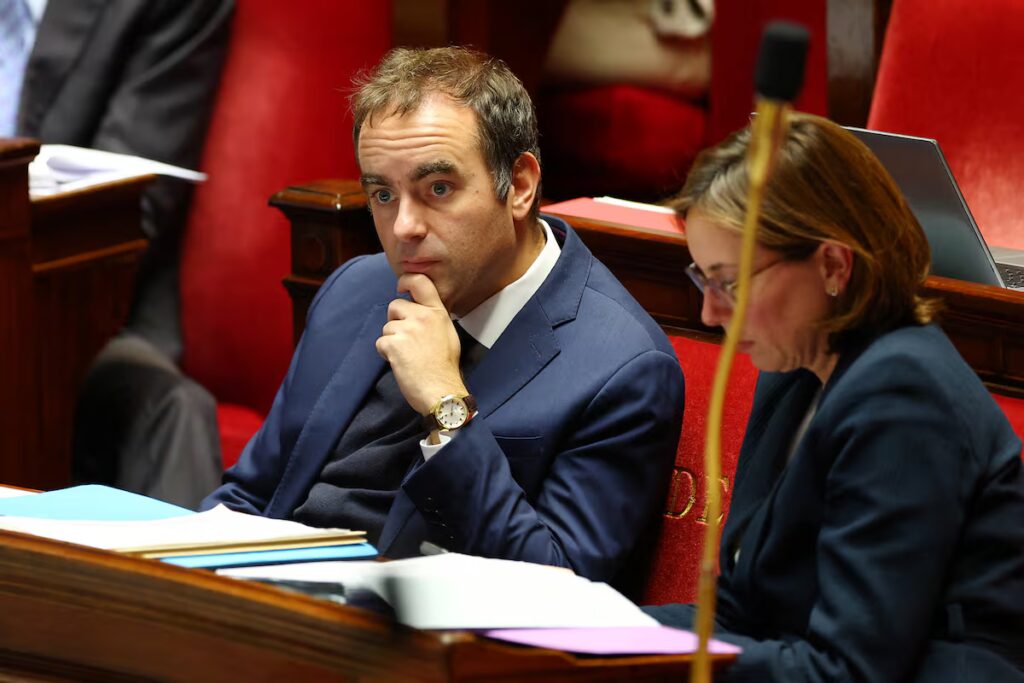
Nearly a year after the censure motion that cost Michel Barnier his prime ministership, France is still trapped in a labyrinth. Parliamentary fragmentation makes it almost impossible to prepare public accounts that lead to a deficit higher than 6% – double what is allowed by European standards – and which, in the absence of reforms, leads the country to a growing debt. After Barnier, overthrown by a motion of censure in the National Assembly, two prime ministers have passed (François Bayrou, until September, and Sébastien Lecornu), and three governments (Lecornu repeated it), and the problem remains the same: the lack of support for the approval of the budget. The risk premium is now lower than 12 months ago, but France has suffered several downgrades over time, and investor patience is not infinite.
Like a year ago, the executive is working against time to draw up bills that restore stability and calm the markets. The suspension of the controversial pension reform (a lesser evil in the eyes of investors) allowed him to buy time to solve the puzzle, but not to win. Lecornu refused to use the constitutional article which allows him to approve a text without going through Parliament (49.3), which protects him from a motion of censure and allows him to negotiate, at the cost of complicating the process. Thus, on Saturday the National Assembly overturned a budget plan that contained dozens of amendments from all groups, which led to an almost unanimous rejection.
The text now passes to the Senate and can be reformed before returning to the Assembly, but the margins for maneuver are not wide and the market remembers the fate of Lecornu’s predecessors. The risk premium, which had shown some relief in recent weeks, remains at 77 basis points. This is 11 points less than a year ago, but far from the 45 recorded before the legislative elections of June 2024, when the advance of the far right in the European Parliament elections led Macron to call legislative elections, the result of which is the current Assembly.
“Although financing costs remain manageable – the 10-year bond is around 3.5% – the spread with Germany has consolidated at high levels, a sign that investors perceive structural risks,” says Gorka Apodaca, advisory director in Catalonia and the Balearic Islands at Creand AM. The French country risk is already equal to the Italian one (76 points) and is moving away from the Spanish 50 basis points.
Paradoxically, the economies of southern Europe, once a symbol of fragility, now support the bloc. ECB President Christine Lagarde recently highlighted that the resilience of the Eurozone economy is largely due to the exceptional performance of the region’s fourth largest economy (i.e. Spain). Compared to the German economy which grew by just 0.3% year-on-year in the first nine months of the year, and the French economy which grew by 0.9%, Spain’s GDP increased by 2.8%.
“France is in a political stalemate. The market pressure to adapt is not strong enough and an orderly solution to the debt problem seems unlikely,” says Thomas Mayer, director of the Flossbach von Storch research institute. With minority governments – four in the last year and a half – the expert doubts that the pending reforms can be implemented and believes the situation is unlikely to improve, even after the 2027 presidential elections.
As the political crisis deepens, fiscal imbalances continue to worsen. The debt already exceeds 3,340 billion euros – 114% of GDP – and, after closing 2024 with a deficit of 5.8%, everything indicates that this year it could approach 6%. “The projected growth of 0.7% is not enough to correct these imbalances without significant adjustments,” warns Apodaca. ING analysts agree: after the suspension of the pension reform, budget efforts will have to be stepped up every year to keep the promise of a 3% deficit in 2029.
The proposals to increase taxes for the richest families and businesses, as well as to reduce public spending from 56.8% in 2025 to 54.4% in 2026, convince neither the opposition nor the market. Philippe Waecher, Ostrum’s chief economist, considers them insufficient and unsustainable. “Raising taxes is not a good idea, even if there are equity issues (those who earn the most will also contribute the most); the debt has grown steadily since its low in 1975 and resorting to it to reactivate the economy is ridiculous,” he stresses.
Even the private sector does not escape debt. “It is over-indebted, with a total ratio of 268% of GDP in 2023, compared to 171% in Germany. France is too dependent on external financing to support its economy,” Mayer says. An increase in the cost of government debt has a two-fold effect: It forces the government to pay more to borrow and it raises the cost of financing for banks, businesses and many mortgage holders.
The shield of the ECB – which still holds around 25% of French debt – has so far helped contain market nerves: although the institution has not activated the Transmission Protection Instrument (TPI), designed to stop disorderly spikes in spreads, Nadia Gharbi, European economist at Pictet WM, acknowledges that Lagarde can continue to show flexibility. But be careful: nothing is free. To benefit from any interventions, “France will have to demonstrate a firm commitment to European rules, including the application of credible and effective corrective measures,” he argues.
In a speech in Vienna last weekend, ECB President Christine Lagarde warned against the temptation to turn monetary policy into an antidote to debt problems. Earlier this month, the leader of the French far right, Jordan Bardella, even suggested the possibility of the ECB resuming massive asset purchases, an idea that his predecessor, Marine Le Pen, had already defended a year earlier.
The deterioration of public finances, in addition to putting debt sustainability at risk, has aroused the suspicions of rating agencies. While economies such as Spain and Italy have seen their consolidation efforts recognized by ratings firms, France has been downgraded. Fitch lowered the country’s rating to close to A+, while it restored Spain’s rating lost in 2012 (A, one step below the French rating). Last Friday it was Italy’s turn: Moody’s improved its rating for the first time in 23 years, going from Baa3 to Baa2, five steps below that assigned to France.
Germán García Mellado, fixed income manager at A&G Global Investors, recalls that the recent cuts have not changed the pace of French bonds much, which were already trading at a higher premium to Spanish bonds. However, he warns that any budget extension or the fall of the Lecornu government could reverse this apparent calm, sending debt yields higher. For other analysts, Moody’s negative outlook serves as a warning signal: any deviation from the deficit could set off alarm bells and trigger a new rating cut.





